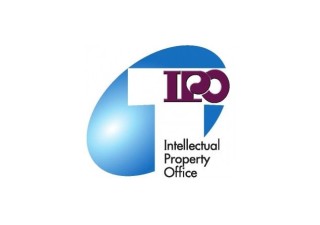In 2013, patent and trademark applications filed with TIPO totalled -2.19% and -0.44% respectively, as compared to those of the preceding year. This represents the first-ever downward incline in the headway TIPO has made since the financial tsunami.
The number of overall patent applications in 2013 was down mainly because of the decreased filings in both invention, -3.85% and utility model, -2.38%. Design filings, on the contrary, saw an 8.73% growth, stoked by an increasing emphasis on product design and expanded scopes of subject matter under the new Patent Act, effective since January 2013.
Compared to 2012, overall patent applications in 2013 by Chinese nationals and non-nationals slumped 3.43% and 0.19%, respectively. This drop can be explained by decreased number of domestic and foreign invention applications, with the former marking the largest dip in 10 years. The decreased number in utility model applications by nationals, -2.42% and non-nationals, -1.74% also contributed to the slump. As to design applications, however, filings by domestic and foreign applicants saw a 2.71% and 18.04% increase, underscoring the latter’s proactive patent portfolio.
Among top three patent filing countries, Japan, taking the lead for many years with continuous increase, topped the chart and outstripped those on the list. The US came second with a steady growth and South Korea reclaimed its third position by outnumbering mainland China. As to growth rate, invention applications by Japan and the US slipped slightly whereas South Korea experienced the fastest growth. China, the frequent topper in utility model, suffered a slightly larger drop of 8.71%. In design applications, Japan, the US, +46.41% and South Korea, +181.58%, dominated the chart thanks to their adopting new measures of the amended Patent Act and their proactive portfolios.
Thanks to its fast-track measures and addition of manpower, TIPO in 2013 was able to conclude with an outstanding performance in patent examination, with examination number hitting an all-time high. The number of first office actions issued in 2013 witnessed a 27.69% increase over the preceding year. Compared to 2012, the number of rendered decisions was up 28.46%, exceeding that of substantive examination requests. The first office pendency (7.08 months shorter than in 2012) for invention applications came to a five-year low, averaging 32.59 months; overall pendency averaged 41.33 months, also cut short by 4.81 months than the year before. In monthly average, pendency in December 2013 came down to 38.12 months. Because of marked examination efficacy, the number of pending invention applications has been gradually lowered from 160,000 in 2011 to less than 130,000, the lowest in five years.
In trademark, registration applications (by case) filed with TIPO in 2013 totalled 74,031, representing a slight 0.44% decrease than in the preceding year. Compared to 2012, a similar dip also took place in domestic filings, -0.64%, while applications by foreigners were slightly up by 0.17%. Among the top three filing countries, the US came back to lead with 3,694 applications, accounting, however, for a 3.83% decrease. Japan fell one slot and came second, marking an even greater slump of 15.85%. In view of such decline, further analysis is necessary with regard to filings by the said top-notchers. China on the contrary came third with an 11.24% increase, gradually closing in on the top two.
With the new Trademark Act and Patent Act now fully in place, trademark holders and patentees will be better protected. In retrospect, patent and trademark applications slumped or remained relatively unchanged in 2013 except for design applications, which soared due to expanded scopes of subject matter resulting in more portfolios by foreigners. The said slump, on the other hand, may have been caused by Taiwan’s recent economic downturn and industrial transformation, reflecting in lukewarm applications or shifting trends in patent portfolios.







